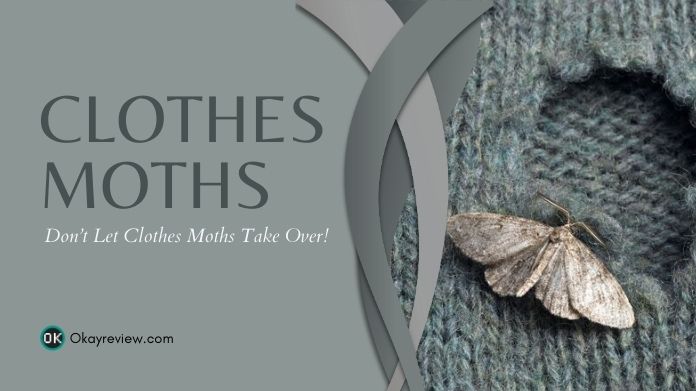You open your closet, reach for your favorite sweater, and ugh. Tiny holes. If you’ve ever experienced this heartbreak, chances are you’ve had a run-in with clothes moths.
These little pests may be small, but don’t be fooled, they can do some serious damage. A few unnoticed moths can quietly wreak havoc on your wardrobe, especially if you store clothes for long periods without checking in.
But the good news? You can absolutely fight back. The key is catching the problem early and knowing exactly what steps to take.
Let’s walk with Okayreview through everything you need to know to evict clothes moths from your closet and keep them from coming back.
Table of Contents
Understanding Clothes Moths
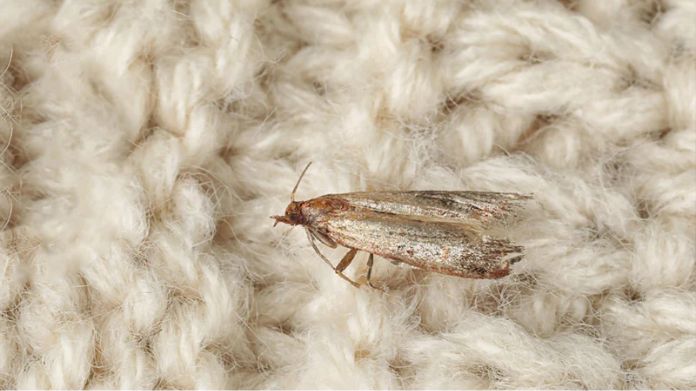 First things first: not all moths are created equal.
First things first: not all moths are created equal.
There are two main troublemakers when it comes to your clothes:
- Webbing clothes moths (Tineola bisselliella): These are the most common. They’re pale, tiny, and avoid the light.
- Casemaking clothes moths (Tinea pellionella): These guys build little protective cases out of fabric fibers and move around with them.
Unlike pantry moths (the ones that invade your dry goods), clothes moths are fabric-feeders, and their larvae are the real villains here; they munch away at your wardrobe while you’re none the wiser.
Why They Love Your Clothes?
Clothes moths are picky eaters in a very annoying way. They’re attracted to:
- Wool, cashmere, silk, feathers, and fur
- Items with lingering body oils, food stains, or sweat (even if you can’t see or smell it)
That’s why unwashed clothes, especially those tucked away for the season, are like an all-you-can-eat buffet.
How to Spot a Clothes Moth Infestation?
The Signs to Watch Out For
Think you might have clothes moths? Here are some red flags:
- Tiny holes in your clothing, especially in natural fabrics
- Fine, dusty webbing or cocoons in corners or folds
- Small larvae or casing shells in drawers
- Adult moths fluttering around the dark corners of your closet (they usually avoid light)
The damage often shows up long after the moths have laid their eggs, so if you see even one moth, don’t ignore it.
Where to Check First
Clothes moths love dark, quiet places. Start inspecting:
- Closets and wardrobes (especially corners or under hanging clothes)
- Drawer corners and seams
- Suitcases or storage bins with off-season clothes
- Under furniture or around baseboards, where dust gathers
How to Get Rid of Clothes Moths?
Step 1: Take Immediate Action
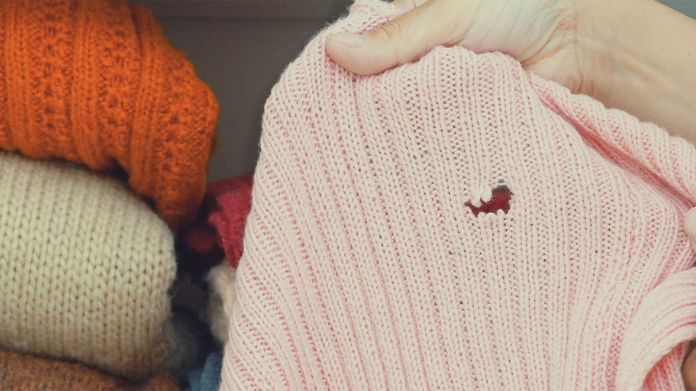
First, remove everything from the affected space. Separate visibly infested items and don’t mix them with clean clothes. You don’t want the problem to spread.
Step 2: Deep Clean Everything

- Here’s your anti-moth checklist: Vacuum everywhere, floors, shelves, corners. (And, pro tip? Toss the vacuum bag outside when you’re done. Eggs can survive in there.)
- Wash or dry clean what you can. High heat kills larvae.
- For the fancy or delicate stuff, you can’t wash it? Bag it up and freeze for three days. Ice, ice, baby they’ll never see it coming.
Step 3: Try Natural Remedies
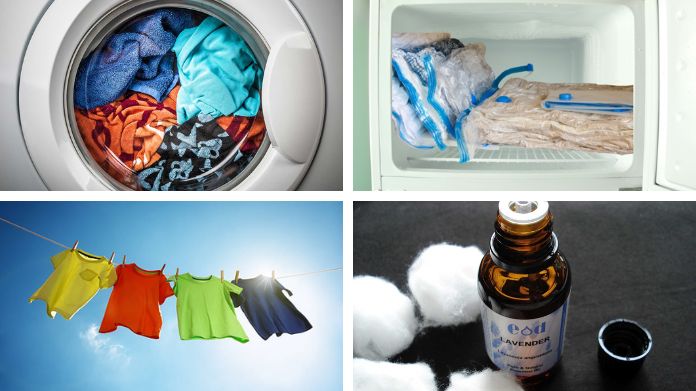
Want to avoid chemicals? These options actually work:
- Dry cleaning or hot water: One method for getting rid of fabric moths and preventing additional damage. For things that can be dry cleaned or washed at home, use hot water, preferably over 120°F.
- Freezing: To kill moth eggs and larvae, place clothing in a freezer that maintains a temperature of 0°F or colder for a week. Then, remove and air out the items.
- Sunlight: Expose afflicted clothing to direct sunshine, since UV rays can repel and destroy clothes moths, larvae, and eggs.
- Lavender: Dried lavender sachets or essential oil sprays act as repellents.
Step 4: Chemical Options (If Needed)
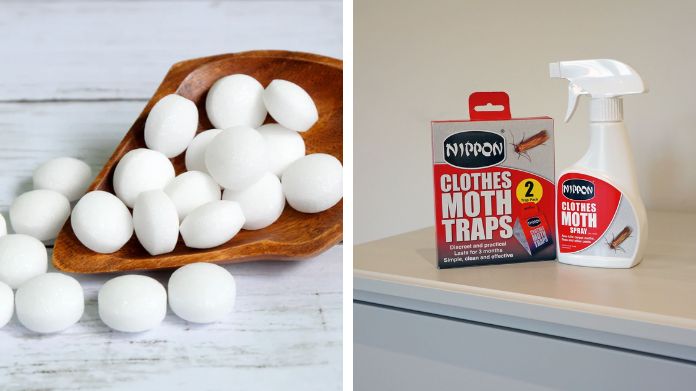
If the infestation is severe or recurring, you may need reinforcements:
- Mothballs: Old-school but effective. Just be cautious, they’re toxic and best used in sealed containers.
- Insecticidal sprays: Look for fabric-safe products and always follow the directions.
How to Prevent Clothes Moths From Coming Back?
Store Smarter
- Clean clothes before storing, as moths are drawn to sweat and oils, not just the fabric.
- Use airtight containers or vacuum-sealed bags for long-term storage.
- Avoid storing clothes in damp or dark areas like basements.
Make Maintenance a Habit
- Vacuum and dust storage spaces regularly.
- Rotate your clothes seasonally, even just shaking out garments helps.
- Inspect secondhand clothes or furniture carefully before bringing them home.
Use Safe Repellents
- Refresh cedar blocks or lavender sachets every few months—they lose potency over time.
- Consider adding moisture absorbers like silica gel to prevent musty, moth-attracting environments.
When to Call in the Professional
- If moths keep reappearing or your valuable clothing is at risk, consider hiring a professional pest control service.
- They can provide effective solutions like fumigation or specialized heat treatments that surpass DIY methods.
- Choose a licensed, well-reviewed provider and inquire about non-toxic options if you’re concerned about chemicals.
Wrap Up!
Clothes moths are crafty little devils, but with the right plan, they don’t stand a chance. Get started with immediate action, a thorough clean, and use natural or chemical treatments when necessary—but don’t just stop there, prevention is key!
The little bit of effort will go a long way in protecting your garments, year after year.
So next time you pack away your winter woolens or pull out your summer linens, give them a quick check. Your closet (and your favorite cashmere sweater) will thank you.

